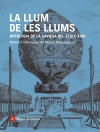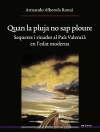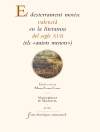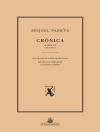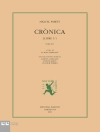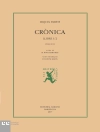Early modern Central Europe was the continent’s most decentralized region politically and its most diverse ethnically and culturally. With the onset of the Reformation, it also became Europe’s most religiously divided territory and potentially its most explosive in terms of confessional conflict and war. Focusing on the Holy Roman Empire and the Polish-Lithuanian Commonwealth, this volume examines the tremendous challenge of managing confessional diversity in Central Europe between 1500 and 1800. Addressing issues of tolerance, intolerance, and ecumenism, each chapter explores a facet of the complex dynamic between the state and the region’s Catholic, Protestant, Orthodox, Utraquist, and Jewish communities. The development of religious toleration—one of the most debated questions of the early modern period—is examined here afresh, with careful consideration of the factors and conditions that led to both confessional concord and religious violence.
Table of Content
List of Figures
Preface
Introduction:Between Conflict and Concord: The Challenge of Religious Diversity in Central Europe
Howard Louthan
Chapter 1. Constructing and Crossing Confessional Boundaries: The High Nobility and the Reformation of Bohemia
Petr Maťa
Chapter 2. Religious Toleration in Sixteenth Century Poland: Political Realities and Social Constraints
Paul W. Knoll
Chapter 3. Customs of Confession: Managing Religious Diversity in Late Sixteenth- and Early Seventeenth-Century Westphalia
David M. Luebke
Chapter 4. Cuius region, eius religio: The ambivalent meanings of state building in Protestant Germany, 1555-1655
Robert von Friedeburg
Chapter 5. The Entropy of Coercion in the Holy Roman Empire: Jews, Heretics, Witches
Thomas A. Brady, Jr.
Chapter 6. Conflict and Concord in Early Modern Poland: Catholics and Orthodox at the Union of Brest
Mikhail V. Dmitriev
Chapter 7. Confessionalization and the Jews: Impacts and Parallels in the City of Strasbourg
Debra Kaplan
Chapter 8. Mary “triumphant over demons and also heretics”: Religious symbols and confessional uniformity in Catholic Germamy
Bridget Heal
Chapter 9. Heresy and Literacy in the Eighteenth-century Habsburg Monarchy
Regina Pörtner
Chapter 10. Union, Reunion, or Toleration? Reconciliatory Attempts among Eighteenth-century Protestants
Alexander Schunka
Chapter 11. Confessional Uniformity, Toleration, Freedom of Religion: An Issue for Enlightened Absolutism in the Eighteenth Century
Ernst Wangermann
Notes on Contributors
Select Bibliography
Figures
Figure 1. Master of St. Severin rosary altar
Figure 2. Rosary image, Cologne
Figure 3. Bartolomäus Bruyn the Elder, Tryptich
Figure 4. Sixteenth-century panels, Virign and Child
Figure 5. Arrival of Gustav Adolph, Augsbury 1632
Figure 6. Altarpiece, Parish Church, Sebes, c. 1524-6
About the author
Franz A. J. Szabo is director of the Wirth Institute for Austrian and Central European Studies and Professor of Austrian and Habsburg History at the University of Alberta in Edmonton, Canada. He has published widely in Europe and North America, including a prizewinning book on Habsburg enlightened absolutism and a recent study of the Seven Years War.


